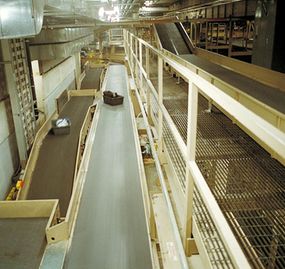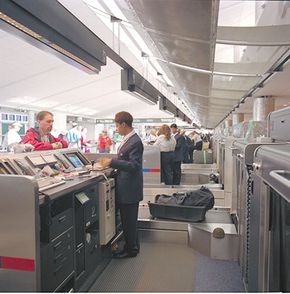Check-in
When you check in, the agent pulls up your itinerary on the computer and prints out one or more tags to attach to each of your pieces of luggage. The tag has all of your flight information on it, including your destination and any stopover cities, as well as a bar code that contains a ten-digit number.
This number is unique to your luggage. All of the computers in the baggage-handling system can use this number to look up your itinerary.
Advertisement
Your bag's first stop (after check-in) is at an automated bar-code scanner. This station is actually an array of bar-code scanners arranged 360 degrees around the conveyor, including underneath. This device is able to scan the bar codes on about 90 percent of the bags that pass by. The rest of the bags are routed to another conveyor to be manually scanned.
Once the baggage-handling system has read the 10-digit bar-code number, it knows where your bag is at all times.

Conveyors take each bag to the appropriate destination. For example, it routes bags headed out of the country through X-ray machines and other security devices.
Let's see how these conveyor systems work.
